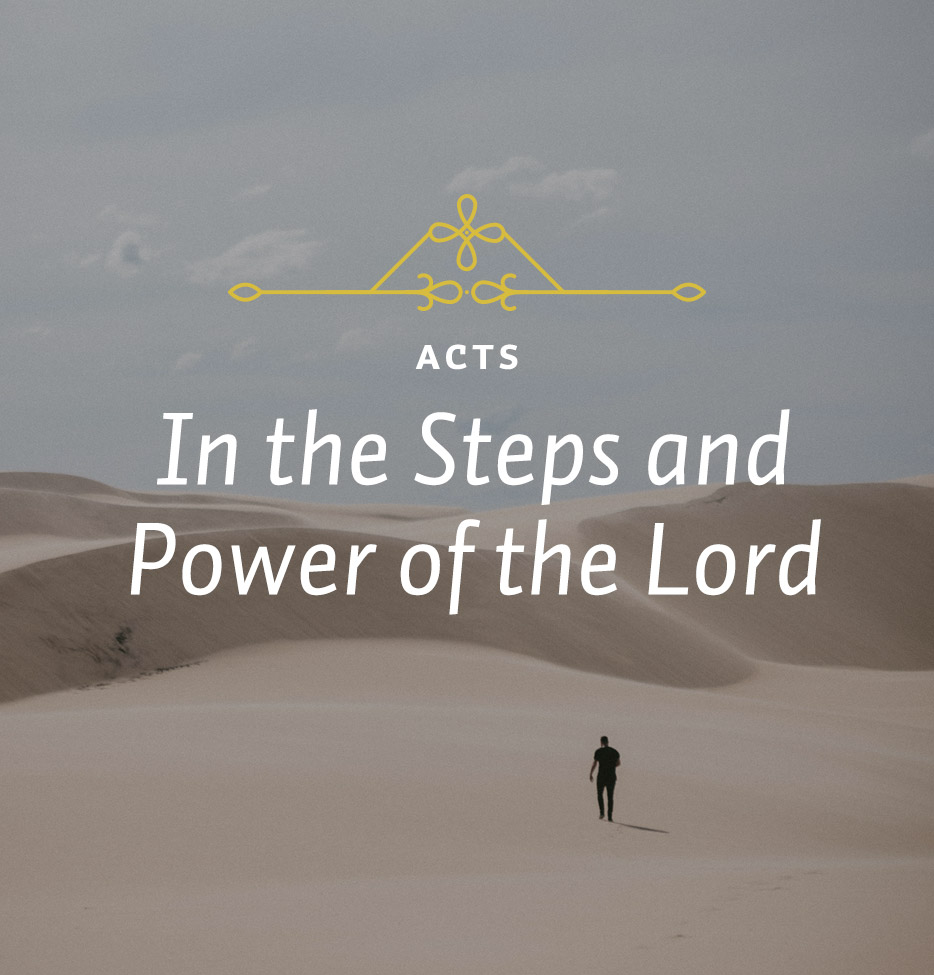The last section of Acts 9 contains two new stories about Peter (vv. 32-43), but it is a bit surprising to find stories about Peter at this point. We are going to see more of him, of course, in chapters 10-12. But we have just had the story of Paul’s conversion, and we might have expected the continuation of Paul’s story here. Instead, we do not have it until chapter 13. What is going on in this portion of the book? When we analyze Acts, we find that the first twelve chapters are mostly about Peter. Beginning with chapter 13, Paul becomes the central figure. What we have in chapters 9-12 is a blending. As Peter recedes, Paul comes forward.
Yet, this is not just an overlapping. As Luke puts this material together, he shows that Peter, the great apostle to the Jews, and Paul, the great apostle to the Gentiles, were not teaching or doing two different things but were actually one in their doctrine and work. This is an important point if, for no other reason, than because it has been so roundly denied in liberal scholarship. If you know the history of liberal scholarship in the last century, you will know that most German theologians made a distinction between what they called the primitive teaching of the Jewish community, centered in Peter, and the later quite different teaching of the Gentile communities, centered in Paul. It was a form of the “historical dialectic” theory developed years before by the great philosopher Georg Wilhelm Friedrich Hegel. Hegel had taught that history flows: 1) from a dominant idea, which he called the thesis, 2) to a contrary idea, which he called an antithesis, 3) to a synthesis, which in turn becomes the new thesis. From there the process repeats itself indefinitely.
Another German professor, Ferdinand Christian Bauer, took Hegel’s theory and used it to explain the early history of the church. The thesis was the primitive Jewish theology centered in Peter. This produced the antithesis of Paulinism, which became the dominant Gentile theology. Then there was a struggle—Bauer went to the chapters of Acts we are studying and to Galatians, which actually does record a disagreement between Peter and Paul—and the result of which was the synthesis of the early Catholic Church.
Unfortunately for Bauer, chapters 9-12 of Acts do not support this idea. Luke does not suggest even for a moment that Peter and Paul were going in different directions. On the contrary, he is showing that the two great apostles were actually of one mind and heart in their work.
One thing we notice is that although in chapter 9 Jesus had called Paul to be the apostle to the Gentiles, in chapter 10 God also called Peter to this same ministry. That is, although Peter remains the chief apostle to the Jews, it is actually Peter and not Paul who opened the door of the Gospel to the Gentiles, going to the household of Cornelius as a response to the vision of the sheet containing animals. Together chapters 9 and 10 provide us with parallel accounts, two great breakthroughs, which launch the next great step in the church’s worldwide expansion. The church had expanded from Jerusalem into the neighboring areas of Judea and Samaria. Now it is expanding to the Gentiles.
True, Philip had carried the Gospel up and down the Mediterranean coast. But that was still a basically Jewish area. Here for the first time, there is to be a breakthrough to the Gentile community. There are other parallels, too. Each of these chapters involves two sets of individuals. In chapter 9 it is Paul and Ananias. Ananias is hesitant about going to talk to Paul. In chapter 10 it is Peter and Cornelius, and Peter is hesitant about going to talk to Cornelius. A study of these and other parallels is interesting and profitable.






